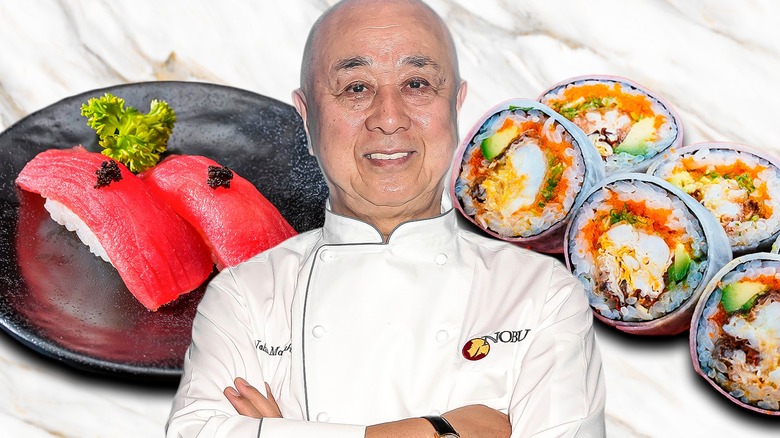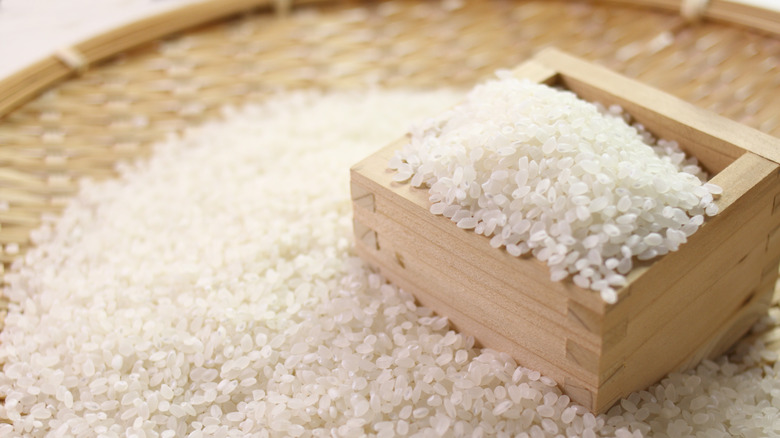Nobu Matsuhisa's Foolproof Technique For Perfect Sushi Rice - Exclusive
Nobu Matsuhisa has built an empire on crafting excellent sushi, starting with his first U.S. restaurant, an L.A. sushi bar called Matsuhisa, in 1987. It's safe to say he's cooked his fair share of sushi rice over the years. In an exclusive interview with Tasting Table, he shared a couple of his secrets for making perfect sushi rice.
Sushi rice is usually a short-grained rice that has been seasoned with salt, a little sugar, and some vinegar. Technique-wise, Nobu emphasized the importance of washing the rice. "The rice is washed at least five to six times before cooking using filtered water." By rinsing rice you help to ensure that it stays fluffy by removing the powdered starch that coats each grain. Multiple rounds of rinsing make sure all the excess starch is completely removed.
In the seasoning phase, rather than using regular rice vinegar — the type called for in many sushi rice recipes – he opts for aged red vinegar. This is a pricey, premium vinegar made with sake lees, a byproduct from brewing sake. It takes up to four years for all of the necessary maturing and fermenting of the sake lees, and for this reason, red vinegar has a more complex flavor than standard rice vinegar. While you might have trouble finding it in U.S. stores, it's easy to purchase online.
Choosing the right rice
Red vinegar may be a fairly accessible ingredient, but the brand of rice used in Nobu Matsuhisa's restaurants is another story. Nobu told us that his restaurants all use the same brand of rice — Kitsu Mizuho. Though English-language information on the company is scant, it appears to be a cooperative of 10 family farms producing the Koshihikari variety of rice in Niigata Prefecture, Japan. Sadly, it seems that normal consumers may not be able to import the company's rice to the U.S., but our guide to the best sushi rice brands has several great U.S.-available rice options to choose from, including a few that sell Koshihikari rice.
What makes Koshihikari rice so special, anyway? It's the preferred short-grain rice variety in Japan because of its unbeatable combination of a sweet, aromatic flavor with a sticky, fluffy, and chewy texture. That means it's ideal for making sushi, as it is resilient enough to hold its shape, but it retains a pleasant melting softness. With a little care and a few special ingredients, you can make your homemade sushi rice like a master.
More information about Nobu and his restaurants can be found here.

